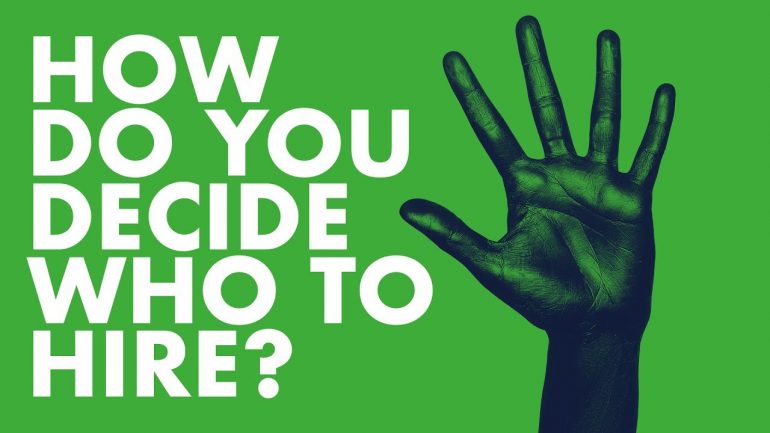
Selection Interviewing Skills
Introduction:
The objective of a selection interview is to establish the extent to which a candidate is suitable for a job. This means finding out how well a candidate’s level of knowledge, skills and attributes fit the requirement for the job.
Selection interviewing is a skilled process, unfortunately, many practitioners and hiring managers over-estimated their ability in this process thereby resulting in some common mistakes.
These include hiring an unsuitable candidate because the selection is not sufficiently objective and the process is too “feel” based.
On the other end of the spectrum, some took a lot of effort and are very strict with selection criteria hoping to find the perfect candidate. This resulted in an unnecessarily long time and effort to find the right candidate which may not exist.
We will like to highlight three areas to focus the effort on; Preparing for the interview, conducting
the interview and finalising the selection.
Preparing for the interview:
The first step in preparing for an interview is to get yourself acquainted with the job description in the following areas which we have highlighted before:
1. Knowledge. What are the relevant knowledge the candidate needs to know to carry out the job?
2. Skills. What are the right skill set in order for the candidate to perform the job?
3. Attributes. What types of behaviour required to perform the job?
Once you have set out the criteria, you should now read the candidates’ resumes and other information available to you.
This will allow you to identify any questions about the candidate’s career. For example, why did the
candidate leave the previous job when he/she were there for a period of six months?
Are there any push factors that caused the candidate to make that decision?
In order for you to achieve a consistent outcome for your interviews, we will advise you structure your interview to field the same questions to all your candidates. This will allow you to effectively identify the strength and weakness of each candidate’s answer to your questions.
Structured Interview method:
A structured interview is based on a well-defined framework with which there are predetermined questions. At Alchemy, we focus on a candidate’s career progression and aspiration to identify overall patterns in their career choices.
Additionally, we will assess for knowledge and skills capabilities through a series of specific questions designed to demonstrate proven skills sets.
All candidates are asked the same questions and the answers will be scored through a matching matrix system.
If you need a copy of our structured interview form, please feel free to contact us for more information.
Conducting the interview:
A good interview is a structured conversation with a purpose. The purpose is to use the opportunity to understand the candidate by questioning and assessing whether he/she can demonstrate suitability against the various criteria. We recommend to structure it into three parts.
Part I
The first step to the interview is to put the candidate at ease and make him or her feel comfortable. We normally welcome and thank them for making the effort to come to the interview.
Next, we generally will tell them about us; Who we are?, what do we do?, Who is the hiring manager? and what is the position about? We should be careful not to spend too much time here, we want to use the time to put them at ease and get them ready for the interview.
Part II
At this stage, we ask questions designed to provide us information about the candidates on the following areas:
1. The career history and progression plan of the candidates
2. The extent to which the candidate’s knowledge, skills and personal attributes matches the job description.
3. Personal behaviour at work like absenteeism and health of the candidate.
Part III
We normally use the last part to allow candidates to ask questions about the job and the company. The keenness and the thoughtfulness of the questions usually allow us to assess the attitude of the candidate towards the job.
If a candidate is promising we will at this point share with them the attractiveness of the job and the company.
If on the other hand a candidate is unsuitable, we will highlight to him aspects of the role that he is not qualified. This must be done tactfully.
At this stage, we will also ask suitable candidates about their availability and permission to obtain references from their present and previous employers. We will inform them that if we do make an offer of employment it will be conditional on a satisfactory reference from their previous employers.
Lastly, we will inform the candidate what will happens next as it might take some time before they
hear from us.
Finalise the selection:
In order to ensure a structure and impartial process, we will assess each candidate against the same questions for all. We will rate all the candidates according to knowledge, skills and attributes using a matching matrix that we have developed.
From the matrix, we will select the candidate that scored the highest in terms of matching percentage. If the scores among candidates are very close, we have to make a view based on which candidate is more likely to fit the job and company.
Final thoughts:
This article shares the approach that we use in our interviewing process. Clearly, there are more to this process that include questioning techniques like open-ended or behavioural event based questions.
Another feature that we used is a proprietary matching matrix that we have developed. It take into consideration KSA (Knowledge, Skill & Attributes) and a rating mechanism to ensure the most objective selection process. We hope you find this article insightful and helpful in developing your own structured interview process.


